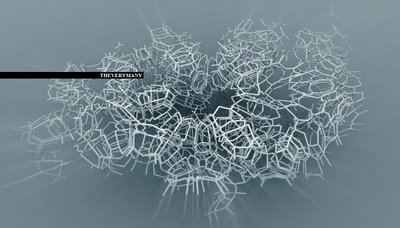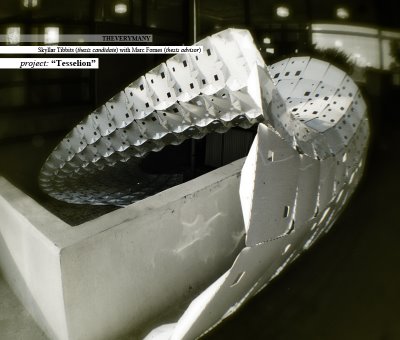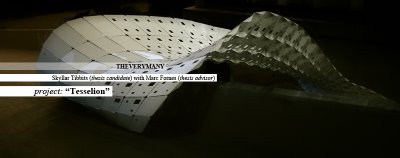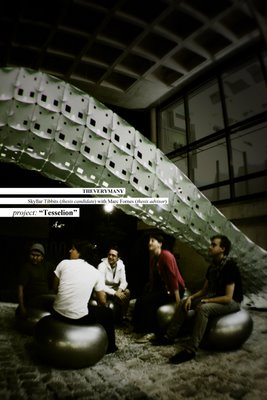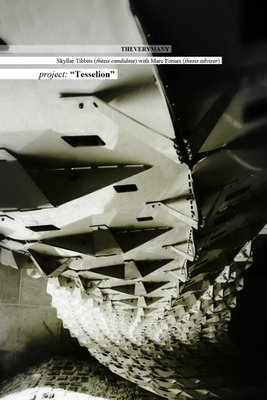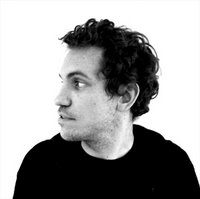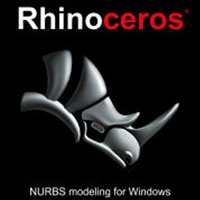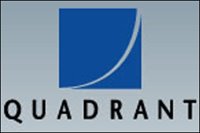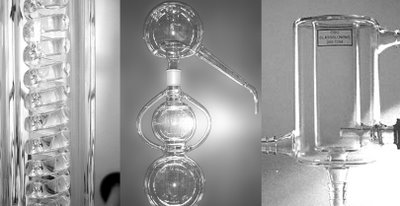
Last minute log - Marc Fornes / THEVERYMANY has been kindly invited (through Francois Roche / R&Sie) to join Lopud Seminar 2008.
"let's go MENTAL"Lopud Seminar 2008
DURATION: May 9 - May 12, 2008
LOCATION: Lopud Island, Croatia
http://tba21.org/program/seminars/53/page_2?category=seminarsFundaMENTALThe most prominent interdisciplinary areas of human interest today are probably those often referred to as generative sciences. The chaos theory, information theory, social network analysis, philosophy of science, epistemology, cybernetics, systems theory and process physics, to mention just a few, belong to this category.
A salient "member" of the group, the complexity theory, explores concepts essential for our understanding of nonlinearity underlying to all reality. It deals with emergence, a construct used to describe a universal phenomenon of a system's increasing complexity spawning processes and/or properties which cannot be detected in the constituting elements or subsystems. The logic of this quantum leap relentlessly applies in a single cell or a living organism, whole eco-systems or man-made structures and systems, whether they are real or virtual, concrete or abstract, material or theoretical.
Often, the related dependency graph is counter-intuitive and a largely non-symmetrical function - our knowledge of any particular level may be useless when it comes to understanding the workings of the next one. We need a different set of tools and concepts. New sciences. Cognition itself is a generative process.
This is a broadening field, which we believe to incorporate an intellectual synthesis of art, architecture music and science which is reflected in the foundation's commissions and events. Peter Corning wrote in 2002: “The synergies associated with emergence are real and measurable, even if nobody is there to observe them." This 2008 workshop, organised on the occasion of the reopening of Your Black Horizon art pavilion by David Adjaye and Olafur Eliasson on Lopud, is the third in a series of such investigations and shall deal with conservation, architecture, design, music, toxicity and botany as well. Experts from all fields are invited.
MedicaMENTALShamanism, healing, religious practice, collective experiences, rituals... Indigenous medicine appears to implicitly rely on emergent properties of both the cure and the organism. This opposes the reductionist approach reflected in extraction of active substances and division of the body to subsystems treated independently. Is this holistic view inherent to all traditional healing techniques? If so, assumed these sets of practices are supervenient to the respective social contexts, how is this cross-cultural feature explained? To which extent was discontinuity of these techniques a transformative process rather than manifest suppression? How much of it was assimilation and/or diffusion into other domains and how did those changes occur? Who are today’s shamans? If rituals can be understood as markers of transformation, does the proverbial use of entheogens have an analogue function? Arcane nature of the knowledge involved affords authority - does that make shamanism as such virtually impossible in a culture increasingly defined by instant access to an accumulated abundance of information - an emergence we're only beginning to evaluate?
ExperiMENTALThe Garden of Earthly Delights alias Toxic Garden engages with the historical site of the Renaissance garden on Lopud by trying to create a continuity of its actual history and adding a new layer. In this case, the architects introduce the rumours of fear and awe, as it is well documented that the monks of the region actually had standardized their expansive pharmacological knowledge on the medical as well as toxic use of plants and experimented with dosage and effectiveness (possibly on themselves) and the production of antidotes and forms of decontamination. Alongside with the tangible, the intangible heritage is revived and further transformed into an active element of the project - an experiment involving (phyto-) therapy and the confrontation, incorporation and embracement of danger and fear through the actual presence of the toxic substance. More than just participation is taking place: a cathartic cleansing, actively keeping the history intact/alive by accepting it in its very nature. This is also expressed in the morphology of the green house, the form of which actually follows the gravity force by sliding and dripping over the existing terraces - wild in nature rather than domesticated. But, while the randomness is just apparent on the material layer of the carefully "architected" project, the interactions that it triggers represent its indeterminable and experimental aspect.
EnvironMENTALConcepts of sustainability and sustainable environmental technologies are essential when contemplating development ranging from the urban landscape to Mediterranean islands. Ecological strategies play a crucial role in redesigning and rehabilitating of cultural landscapes. But concepts of sustainability and environmental solutions often function as ethical branding, driven by market interests, whereas tourism as the main industry of any region involves tendencies that contradict the principles of both sustainability and conservation alike. Many areas suffer from a paradoxical discrepancy between the growing interest they generate and the banality of the daily problems resulting from unresolved environmental and infrastructural issues. Lopud is no exception. Which usable options are presently offered by environmental technologies to a site defined by parameters similar to Lopud's? What are the limits of deployability of such solutions? Which constraints are to be considered? Which experiences can the local community benefit from? Which emergent processes have been reported? Ideally, such solutions should be part of a sustainable strategy that would integrate social and economical aspects as well. Is it conceivable to devise one that would restrain the negative implications of tourism? Which role could and should be played by architects in designing and implementing those strategies? What are the incentives for artists and architects to work with and within such systems in introducing change?
MonuMENTALHow can one actively make use of or revive the information that is stored in today’s places of memory? What strategies do art and contemporary architecture follow in this process? How can cultural heritage be made accessible without transforming the city and countryside into a big open-air museum? An integral part of a conservation process, rehabilitation by definition implies enabling either continuity of original or compatible contemporary use of a historic site. Is it possible to formulate an approach that would more aptly take into account the evolving and fluctuating circumstances of the site? If the measures of preservation are given the necessary attention - does conservation have to be conservative?
InstruMENTALImplementing the results of our experiments and the creation of new radical projects as a result of these departures is instrumental to create a spirit of change and collaboration. We all want that so lets go MENTAL!
Participants of the Debate Sessions are:Alisa Andrasek (architect, Biothing)
Ben Aranda/Chris Lasch (architects, Aranda/Lasch)
Allora Calzadilla (Jennifer Allora & Guillermo Calzadilla)
Beatriz Colomina (theoretician, Princeton University)
Klaus Daniels (ecological sustainable architecture / technical)
Marc Fornes (architect, THEVERYMANY)
Helene Furjan (architect, Princeton University),
Vit Havránek (curator, tranzit Prague)
Florian Hecker (artist)
Russell Haswell (artist)
Carsten Höller (artist)
Mark Oppitz (ethnographer, Ethnographic Museum, Zurich)
Boris Ondreicka (artist / curator, tranzit Bratislava)
Damian O’Sullivan (designer)
Jorge Otero-Pailos (architect, preservation, Columbia University)
Neri Oxman (architect, MATERIALECOLOGY)
Barbara Ozimec (botanist)
Antonia Majaca (curator, critic)
Marina Mlakar (Rudjer Boskvic Institute)
Maroje Mrduljas (journalist, ORIS)
Tony Myatt (MRS York)
Christian Rätsch (anthropologist)
François Roche/Stéphanie Lavaux (architects, R&Sie(n))
David Rych (artist)
Ognjen Skunca (UNDP Coast Project)
Goran Stojanovic (Dolphin Dream Organization)
Slaven Tolj (artist)
Superflex - Jakob Fenger/Bjørnstjerne Christiansen (artists)
Mark Wigley (architect, Columbia University)
RELATED:
as part of the program we will visit the historic gardens, the proposed site of "The Garden of Earthly Delights" by R&Sie(n) - François Roche and Stéphanie Lavaux.
http://new-territories.com/toxics%20gardenlopud.htm"The Garden of Earthly Delights" reintroduces rumor and the unknown as a potential narrative of the site, and proposes to keep its vitality and productive imaginary. It is a toxic garden which serves as a link to the historical presence of medicinal gardens, medieval botany, and the preparation of medical tonics, poisons and antidotes by the knowledgeable Franciscan and Dominican monk community in Dalmatia, with contemporary architectural form. This biosphere will serve as a water harvester, a green house, a tea-room (for phyto-therapy) and will be energy self-sufficient. It will serve as a model for eco tourism in Croatia, as well as becoming a historical reference to the past and the distant future of the region.


